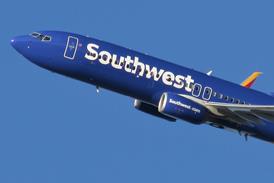NASA has selected three contractors to study a follow-on to the Compton Gamma-Ray Observatory (CGRO), which was deorbited last year after a successful nine-year mission.
Lockheed Martin, Orbital Sciences and TRW will conduct three-month studies to determine how best to perform the Gamma Ray Large Area Space Telescope (GLAST) mission using an off-the-shelf bus from NASA's Rapid II spacecraft catalogue.
NASA's Goddard Space Flight Center plans to select a GLAST prime contractor in 2002, leading to a launch in 2005. The 3,000kg GLAST will be designed to operate in the 20-300GeV energy range, with 30 times the sensitivity of the CGRO's Energetic Gamma-Ray Experiment Telescope.
Lockheed Martin, which plans to base its design on the LM900 bus used for the Ikonos remote-sensing satellite, says the GLAST will observe at least 10 times as many active galactic nuclei and stellar-mass black holes, with much improved source-location accuracy than that of the CGRO. This will require development of new detector technologies with 10 to 100 times the sensitivity, the company says.
NASA Goddard's Rapid II catalogue allows the streamlined acquisition of off-the-shelf spacecraft for science missions. The GLAST design requirements are for a telescope with angular resolution sufficient to associate high-energy gamma-ray sources with celestial objects observed in other wavelengths. The requirements also call for a wide field-of-view and a large effective area.
Source: Flight International























